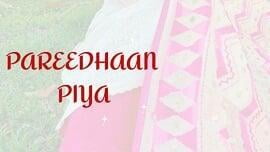About Ajrakh Prints
About Ajrakh Prints
Ajrakh is a unique form of blockprinting found mostly in Ajrakhpur, Kutch district, India. These shawls display special designs and patterns made using block printing by stamps. Over the years, Ajrakhs have become a symbol of the Sindhi culture and traditions.
The level of geometry on the garment comes from the usage of a method of printing called woodblock printing in which prints were transferred from geometric shapes etched on the wooden blocks by pressing them hard on the fabric. Ajrakhs are usually about 2.5 to 3-meters long, patterned in intense colours predominantly rich crimson or a deep indigo with some white and black used sparingly to give definition to the geometric symmetry in design. The most commonly observed pattern in Ajrakh blocks and hence the fabric is dots between two lines, these dots are of same radius in almost all the design. These dots were initially carved out by hands, however later on brass nails were used to fill spaces between the two walls. This aspect is crucial in determining the expertise of the artisan
Mughal era has a deep influence on these designs. The Muslims followed a sense of strong geometry in their patterns and most patterns were formed by the interaction of two or more circles. The Ajrakh blocks were designed taking inspiration from the Muslim architectural elements that form the 'Mizan' - balance and order. The repeat patterns were determined by the grid system. Abstract symmetric representation of surrounding elements and environment were used.
Ajrakh has now become increasingly popular amongst block print lovers. Post the earthquake, there has been an increase in the demand for Ajrakh, moving its status from a local tribal caste dress to a catwalk worthy craft. This has led to a huge amount of funds and dedication from a range of brands being focused onto innovation in the block print. Newer colours have been developed, along with new blocks, techniques etc.






